Working with Monarch Classic Files
Data Prep Studio allows you to work with existing Monarch Classic models and projects.
This means you can take advantage of the robust templating and extraction capabilities of Monarch Classic and use pre-defined models to work with reports.
However, note that tables that come from Monarch Classic files may behave a little differently from tables that come from other sources:
-
Tables associated with a Monarch Classic file are not displayed on the Preview window.
-
Data from reports associated with a Monarch Classic file are displayed as tables on the Prepare window but cannot be prepped.
The following Monarch Classic features are translated in Data Prep Studio when you open a Monarch Classic file:
-
Data captured via all trap types
-
Multi-column regions
-
Formula-based calculated fields using all built-in Monarch Classic functions
-
Named filters
-
Named sorts
-
Lookup-table calculated fields
-
Multiple reports
-
PDF reports
-
Projects that use databases
-
Projects with named exports (some exceptions are listed below)
-
External lookups
-
Runtime parameter fields
-
Summary definitions
-
User-defined functions
-
Bookmarks
-
Report colors
The following features in Monarch Classic models are currently not supported in Data Prep Studio:
-
External Models – External model definitions within a Monarch Classic model are simply ignored when the model is imported into Data Prep Studio.
-
User-edited fields – User-edited fields are displayed in Data Prep Studio with null values.
-
Redaction of report fields – Data Prep Studio does not support Consistent Alias Replacement (CAR)-type redactions. In the case where the Monarch Classic model specifies a CAR redaction for some field, the Data Prep Studio substitutes a non-CAR redaction change that best emulates the CAR redaction specified.
-
Projects with inputs and models from S3, HTTPS, and FTPS (i.e., web sources that require authentication)
-
Report index – Any report index definitions present in the Monarch Classic model are ignored in DPS
The following Monarch Classic project exports are currently not supported in Data Prep Studio:
-
Report exports
-
CAR Map exports
-
PDF (.pdf)
-
dBase (.dbf)
-
Fixed text (.txt)
-
Tableau Data (.csv) (NOTE: Tableau Hyper and Tableau Server exports are supported)
-
Web File (.htm, .html)
-
Custom
-
Access exports using a password
-
Access exports using Update or UpdateAndAppend
-
Any export specifying a column mapping (Excel and Access)
-
Any export specifying an Update Exception File (Access)
Opening Monarch Classic files
-
Select Open Data from the start page and then select Monarch Classic File from the Select Data Source dialog.
-
Navigate to the file you want to open on the Open dialog.
-
Select the file and then click Open.
Working with Monarch Classic projects
If you open a Monarch Classic Project, the model is represented as a table on the Prepare window. Reports associated with model are represented as "sub-tables."
Selecting the report associated with a Monarch project displays the report in Report View.
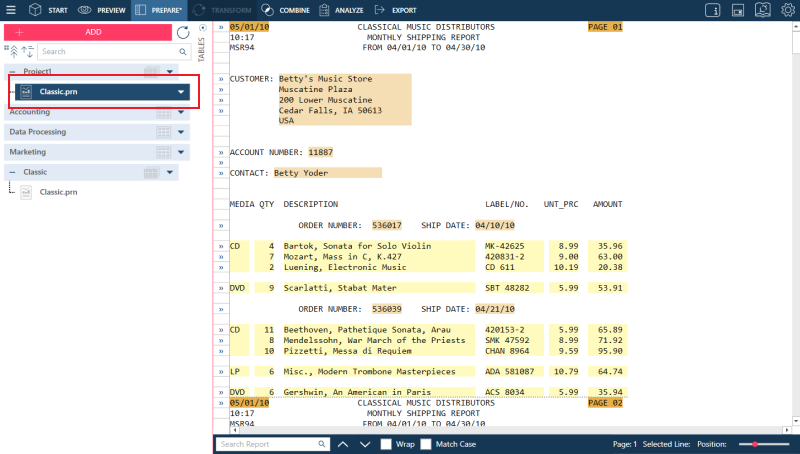
Right-clicking anywhere in Report View displays a context menu that allows you to:
-
Add, view, edit, or remove bookmarks
-
Edit the report in Report Design
-
Copy selected text
-
Search for selected text in an open report or all open reports
NOTES:
-
You can Prep, Transform, and Combine data if you select the main (model) table.
-
You can only view the data if you select a report (you cannot Prep, Transform, and Combine data).
-
Add more reports by selecting the drop-down beside the main table and selecting Add Report.
-
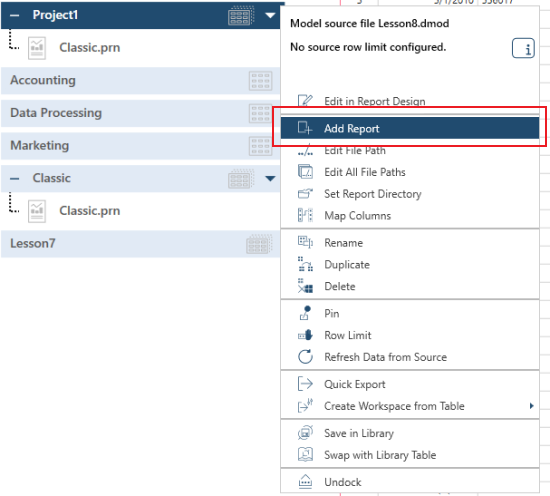
Note that you must select a report that is compatible with the model you opened. Moreover, you cannot add the same report that is already being used in the model. In this case, the report will be skipped and will not be added to the model. The following warning popup will display:
-

-
-
Edit a report's file path by selecting the drop-down beside the main table and selecting Edit File Path.
-

-
Modify the model associated with a Monarch Classic file by selecting Edit in Report Design.
-
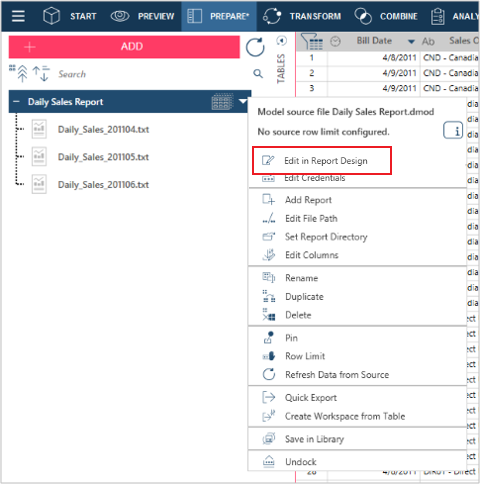
-
To delete a report, right-click on the report you want to delete and select Remove Report from the context menu:
-
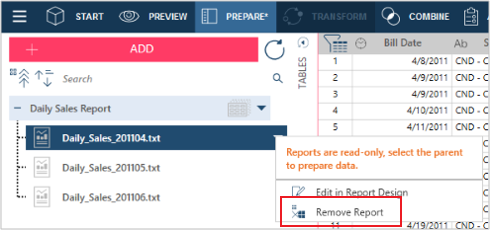
-
If you open a Project that uses a model that cannot be located, Data Prep Studio will display a dialog box telling you that the model cannot be found. Click the Browse button to look for the model and point the model to the correct location.
-
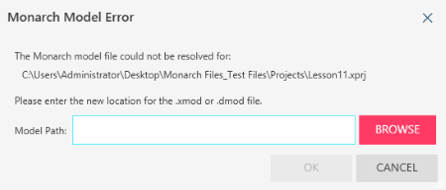
A similar dialog is produced if the report associated with a model cannot be found.
Working with Monarch Classic models
If you open a Monarch Classic model, the model is presented as a Table on the Prepare window. At this point, no data are displayed.
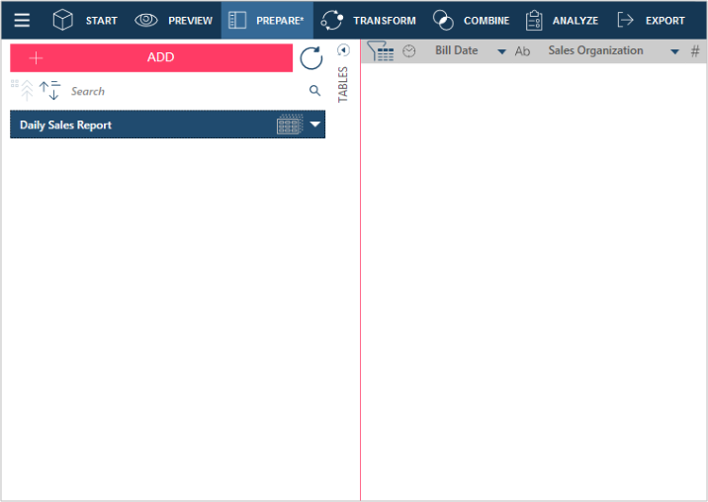
To view data, you must add reports compatible with the model. To do so, select the drop-down beside the main table and select Add Report:
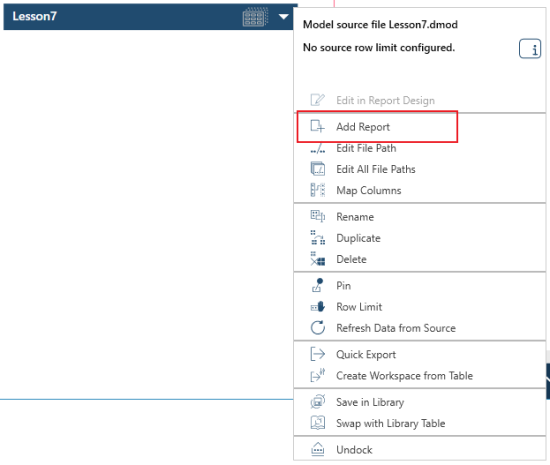
NOTES:
-
You can Prep, Transform, and Combine data only if you select the main table. You can only view the data if you select a report (you cannot Prep, Transform, and Combine data).
-
When a project/model containing elements not supported by Data Prep Studio is loaded into the application, a warning popup will display.
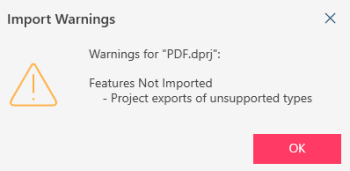
-
You cannot add the same report that is already being used in the model. In this case, the report will be skipped and will not be added to the model. The following warning popup will display:
-

© 2025 Altair Engineering Inc. All Rights Reserved.